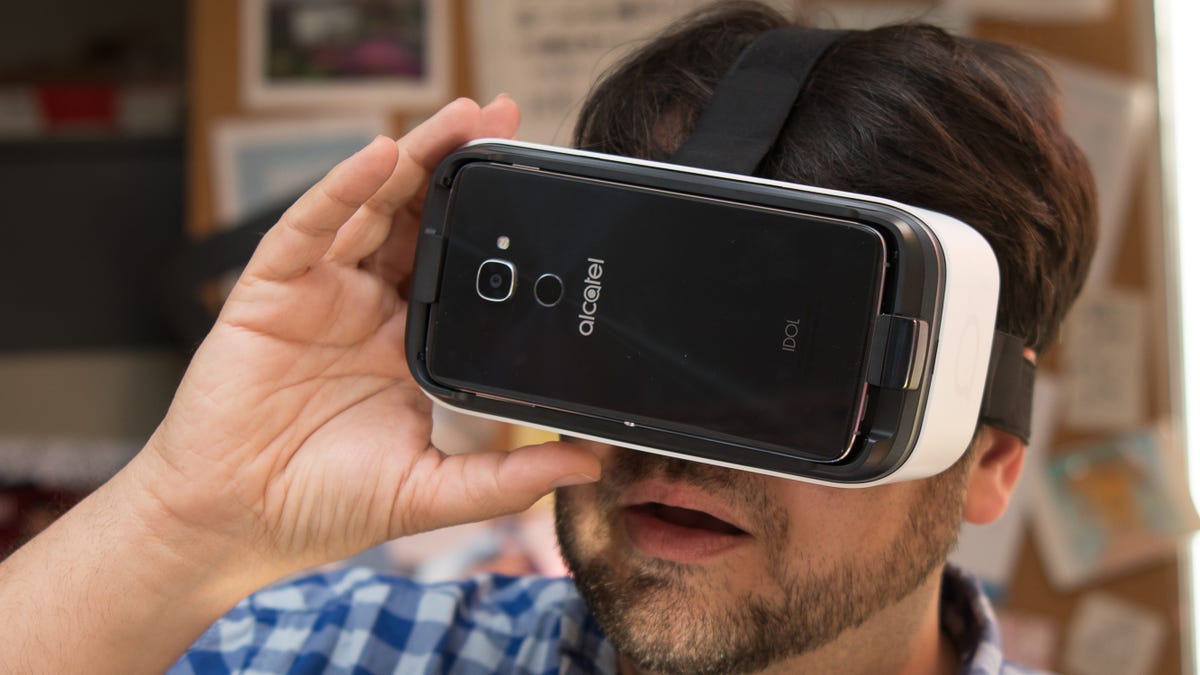Alcatel's phone VR looks like Samsung Gear VR, but it's definitely not as good
A half-step towards where mobile phone VR needs to go (and it made me sick).

No, this isn't the Samsung Gear VR. But it sure does look like it.
Alcatel's new OneTouch Idol 4S phone comes with its own VR headset. This is a growing trend, in case you didn't realize. But when it comes to phones and VR, expect a bit of a step-down experience compared to high-end hardware like the Oculus Rift and HTC Vive. Lower expectations. And, then, maybe, you might like what you try.
Except, in the case of the Idol 4S VR headset, I wasn't always so thrilled.
The Idol 4S has impressive hardware, and its 2,560x1,440 pixel 5.5-inch AMOLED display is bright, crisp and high-res enough for phone VR.
The included free VR headset is also pretty decently built. Its straps are comfortable, the phone pops in easily, and it even has two clever haptic touch-buttons that act as Android interface shortcuts. One acts like Google Cardboard's "play" button, and the other goes back into menus or apps. No other VR headset for phones has anything quite like this except for Samsung Gear VR.
Alcatel's VR headset has its own special bottom-buttons that help with navigation.
But Samsung's Gear VR is a special thing: It's optimized hardware, plugging into the Micro USB port and adding a back button and even an onboard touchpad. And Oculus' mobile Gear VR environment, plus Samsung's set of apps, offer a finely-tuned package that's refined, and mostly importantly, nausea-free.
My first dives with Alcatel's VR dashboard made me a little sick. The interface feels like Google Cardboard, if you've played with one: A simple menu of apps you can scroll through. Alcatel also includes a few pre-installed games, like Lamper and Titans of Space. They're upgraded to look better than the average Android Google Cardboard VR game.
But a lot of movement seemed laggy, and some apps started to have drift. I'd find myself looking in one direction, while the scene was somewhere else. And while you can put the Idol 4S in either way, some apps don't always launch in the right orientation. I ended up playing Lamper upside-down. Don't do that.
Seriously, it looks like Samsung Gear VR.
Alcatel's VR headset isn't an official Google Cardboard one, so the wide assortment of apps out there on Google Play don't all work. YouTube seemed fine. One advantage to this headset is that it at least has a firm head strap. But I wanted to take it off after just a few minutes.
Google's own higher-end Daydream VR platform is coming this fall, with new apps and compatible phones. It's unclear whether the Alcatel Idol 4S is or isn't Daydream-ready (I asked, and didn't get a clear answer). But the included VR headset, while free, is at best a half-step.

